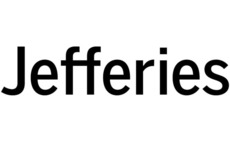
Warranty and indemnity insurance: The information barrier
Warranty and indemnity insurance is growing in popularity in Asia, particularly in emerging markets. A lack of understanding is the biggest impediment to its widespread adoption
When Ai Ling Cheow joined Marsh's Singapore team in 2007, the market for warranty and indemnity (W&I) insurance in Asia was relatively sedate. The product was a staple in markets like the US and Europe, but few Asian investors were familiar with it, and those who were largely saw it as unnecessary. They reasoned that issues with sellers could be resolved without an expensive insurance policy.
The global financial crisis shook these assumptions, and when M&A activity resumed Marsh began to see more buyers looking for post-deal protection, led by private equity firms that had previously encountered it overseas. W&I insurance policies emerged on the seller side in 2013-2014, during an uptick in trade sale and secondary exits by larger managers.
"In the early days the GPs were a bit ahead of the curve when they tried to use W&I insurance in the sale process – the strategics might shy away," says Cheow, now private equity M&A Asia leader at Marsh. "But since 2015 I think corporates have realized that this is here to stay, and if they wanted to be in the game, they need to be familiar with W&I insurance."
Market observers believe that W&I insurance has begun to reach an inflection point in adoption both in Asian PE buyouts and the broader M&A market, particularly in emerging markets. However, investors must ensure they work with financial advisors that understand the product and can negotiate on their behalf.
Gaining popularity
For insurance brokers, growth in demand for W&I insurance in Asia is undeniable: Marsh, for instance, provided 60 policies in 2017, up from 22 in the region just three years earlier. The growth continued in the first half of this year, when the firm provided 35 policies. A majority of the deal flow in both 2016 and 2017 came from Southeast Asia and India, with Japan in third place.
Other market participants report similar performance. Louis Bidmead, a regional W&I underwriter with AIG based in Singapore, says the number of policies that the firm underwrote in 2017 was more than twice the 2014 total, with most of the growth coming outside the relatively stable markets of Australia and New Zealand.
The appeal of W&I policies in Asia is that they assure both buyers and sellers their rights will be protected if representations in the purchase agreement are found to be inaccurate, which may save the participants from a court battle that can interfere with their post-deal plans.
"From the seller's point of view, the traditional contractual remedy or indemnification structure is not a clean exit: if you have a potential post-closing claim hanging over you, you can't distribute all of the proceeds immediately to your LPs. You have to hold part of the proceeds back before you can distribute," says Tim Gardner, a Hong Kong-based partner at law firm Weil.
For buyers, a W&I policy can also ensure that there is somebody to pay out if the seller is a special purpose vehicle that might not have any assets after the deal. If the sellers include members of management it can also help to keep relations from deteriorating.
One of the best-known uses of W&I insurance in Asia was in 2014, when Asahi sued Pacific Equity Partners and Unitus Capital over alleged misrepresentations when it purchased Independent Liquor from them three years earlier. The GPs eventually agreed to pay Asahi A$199 million ($147 million), of which A$138 million was reportedly paid by their insurers.
While the effect of individual cases are hard to quantify, industry observers agree such events can publicize W&I insurance by demonstrating that claims can be enforced and paid out. Calls for W&I products now come from markets where there was no interest a few years ago.
"We're at a point now where very few, if any, emerging markets are off the table for us," says AIG's Bidmead. "We've quoted deals in Cambodia, for instance. There are sensitivities there, and we have to be a little bit more careful, but if the deal is structured well and there are sophisticated parties on both sides, we would certainly look at quoting deals in those jurisdictions."
Knowledge gap
However, while use of W&I is spreading in emerging markets, locals' understanding of it is far from universal. Deal participants must be prepared to give counterparts time to become acquainted with them. AIG is currently working on a deal involving a Thai manufacturer and the seller has requested a W&I policy, but the buyer is unfamiliar with the product. Both AIG and the insurance broker have devoted significant time explaining how it works.
Writing policies for companies in emerging markets also tends to be more complicated than in the West because a greater number of representations that need to be insured against. Underwriting is also slowed by the difficulty in obtaining relevant information.
"We do sometimes see a slightly weaker quality of due diligence, or a weaker disclosure process by the seller," Bidmead says. "And when there are gaps in disclosure and due diligence, there may be corresponding gaps in the coverage that we can provide. Our underwriting process and the terms of the policy are no different, but it is a slower process in emerging markets and more education is needed."
As appetite for W&I insurance continues to grow in Asia, this knowledge gap will likely remain the biggest challenge for the industry. Investors in developed markets have many brokers and underwriters to choose from, but in emerging economies these are harder to find; in some countries only one W&I insurer operates.
In addition, the market is considered very difficult for new participants to enter, due to the preference of existing players to stick to partners they know well. Given the specialized nature of the product, newcomers will need considerable time to build their reputations.
"Advisors and law firms like to work with brokers who understand the timeline, the pressures, and execute flawlessly, and who know where the obstacles are that the clients need to navigate. And those skills are very proprietary," says Cheow. "W&I insurance is a bespoke product and it's not as simple as hiring someone to read a brochure and go out to sell it."
Latest News
Asian GPs slow implementation of ESG policies - survey
Asia-based private equity firms are assigning more dedicated resources to environment, social, and governance (ESG) programmes, but policy changes have slowed in the past 12 months, in part due to concerns raised internally and by LPs, according to a...
Singapore fintech start-up LXA gets $10m seed round
New Enterprise Associates (NEA) has led a USD 10m seed round for Singapore’s LXA, a financial technology start-up launched by a former Asia senior executive at The Blackstone Group.
India's InCred announces $60m round, claims unicorn status
Indian non-bank lender InCred Financial Services said it has received INR 5bn (USD 60m) at a valuation of at least USD 1bn from unnamed investors including “a global private equity fund.”
Insight leads $50m round for Australia's Roller
Insight Partners has led a USD 50m round for Australia’s Roller, a venue management software provider specializing in family fun parks.







